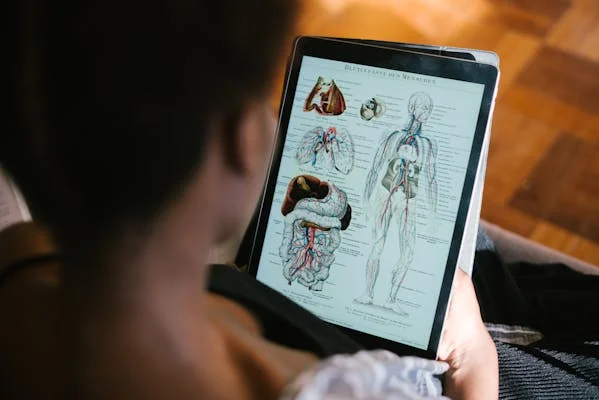3D modeling is a fascinating and rapidly growing field that blends art, technology, and creativity. Whether it’s creating visually stunning characters for a video game, designing architectural blueprints in vivid detail, or developing models for medical training, mastering 3D modeling opens up endless career possibilities. But how does one get started? What kind of education is required for 3D modeling? This guide explores the educational paths, essential skills, and additional resources needed to build a successful career as a 3D modeler.
What is 3D Modeling?
Before diving into the educational requirements, let’s clarify what 3D modeling is. Simply put, 3D modeling involves creating three-dimensional representations of objects, characters, or environments using specialized software. These models are commonly used in industries such as gaming, animation, architecture, engineering, film production, and even healthcare.
Due to its high demand across various sectors, 3D modeling requires both technical expertise and artistic skills. Based on your ambitions and career goals, your educational pathway can vary. Here’s a closer look.
Do You Need a Degree for 3D Modeling?
While formal education, such as a college degree, isn’t always required, it might offer significant advantages. Here are several routes you might consider based on your aspirations and current skill set:
1. Bachelor’s Degree in Relevant Fields
For those seeking a structured path and advanced career options, a bachelor’s degree is often the ideal choice.
- Common Majors to Consider:
- Animation
- Game Design
- Computer Graphics
- Industrial Design
- Architecture
- Skills Acquired Through a Degree Program:
A bachelor’s degree helps you build a strong foundation in 3D design principles, software mastery, and hands-on practice. It typically also touches on traditional art skills, such as perspective or figure drawing.
For example, a bachelor’s program in animation or game design will teach you not only how to create characters and render scenes but also the storytelling and industry-specific workflows needed to succeed. Similarly, an architecture degree might emphasize technical precision and CAD software training.
2. Associate Degrees or Diplomas
If committing to a 4-year degree feels daunting, an associate degree or diploma from a technical school is a practical and affordable alternative. These programs typically last two years or less and focus on hands-on, technical skills.
- Examples:
- Associate of Arts in 3D Animation
- Technical Diploma in Game Design
- Benefits:
- Faster entry into the workforce
- More affordable than a bachelor’s program
- Focus on key skills and software training
3. Online Courses and Certifications
If you’re switching careers or need to pick up skills quickly, online courses and certifications offer incredible flexibility. Platforms like Coursera, Udemy, and CG Spectrum offer specialized 3D modeling courses taught by industry professionals.
- Why Choose Online Learning?
- Learn software like Blender, Maya, 3ds Max, or ZBrush at your own pace.
- Cost-effective compared to traditional education.
- Suitable for beginners looking to build portfolios or professionals seeking new skills.
For instance, you can take Blender training courses to learn the basics of free, open-source, 3D software. If you’re interested in animation, Maya certifications will help you get industry-ready in no time.
Key Skills Required for 3D Modeling
What sets a good 3D modeler apart isn’t just education—it’s the skills they bring to the table. Regardless of how you choose to learn, the following skills are essential for success in this field:
1. Mastery of 3D Software
3D modeling relies on specialized tools. The most common software includes:
- Blender: A versatile, free tool for modeling, animation, and rendering.
- Autodesk Maya: Known for animation and 3D modeling in the entertainment industry.
- 3ds Max: Ideal for architecture and engineering-focused designs.
- ZBrush: Frequently used for sculpting detailed characters.
Tip: Employers often value hands-on experience with these tools, so prioritize building expertise through practice, tutorials, or certifications.
2. Artistic Foundations
Dive into basic art principles to create designs that are realistic and compelling.
- Key Areas to Focus On:
- Anatomy for character modeling
- Lighting and shading techniques
- Colors and textures
- Ways to Improve Artistic Skills:
Draw regularly, study artwork or photography, and consider taking life drawing classes to develop your skills.
3. Problem-Solving and Attention to Detail
Crafting 3D models involves complex problem-solving and fine-tuning. You’ll need to figure out how to make models render well in different environments, create efficient workflows, or fix texture mapping issues—all while keeping an eye on small details.
4. Technical Know-How
Understanding how your designs fit into the larger picture is critical, especially if you’re working in industries like gaming or architecture:
- Learn coding basics (e.g., Python scripting in Blender).
- Study pipeline workflows and rendering techniques.
- Understand geometry optimization for real-time engines like Unreal or Unity.
Specialized Education by Industry
Different industries require unique skills and tools. Below are some tailored recommendations depending on the field you’re interested in:
1. Gaming and Animation
- Seek education focusing on rigging, skinning, and animating models.
- Develop skills in real-time rendering engines such as Unity or Unreal Engine.
- Courses that teach storytelling can also help narrate better game environments or character arcs.
2. Architecture and Engineering
- CAD software like AutoCAD and SolidWorks is essential.
- Explore degree programs in architecture or industrial design.
3. Film and Visual Effects
- Tools like Houdini and After Effects are commonly used.
- Focus on industry pipelines, especially for environments and effects-heavy projects.
4. Product Design and Manufacturing
- Invest in learning SOLIDWORKS or Rhino 3D, tools often used for industrial purposes.
- Understand precision and scalability needed for technical designs.
Building an Impressive Portfolio
No matter your educational path, creating a portfolio is key to showcasing your skills to potential clients or employers. A strong portfolio includes:
- Diverse 3D projects (characters, environments, product designs, etc.).
- Clear descriptions of the tools and techniques you used.
- Polished renders with proper lighting, textures, and post-processing.
Insider Tip: Include your works-in-progress or sketches to demonstrate versatility and growth.
Final Thoughts
Gaining an education in 3D modeling isn’t about following one set path it’s about developing the technical, artistic, and practical skills you’ll need to succeed, whether through formal education, online learning, or a combination of both. Having a deep understanding of the tools, building a strong portfolio, and staying up-to-date with industry trends will make you a sought-after professional.
what kind of education is required for 3d modeling?





